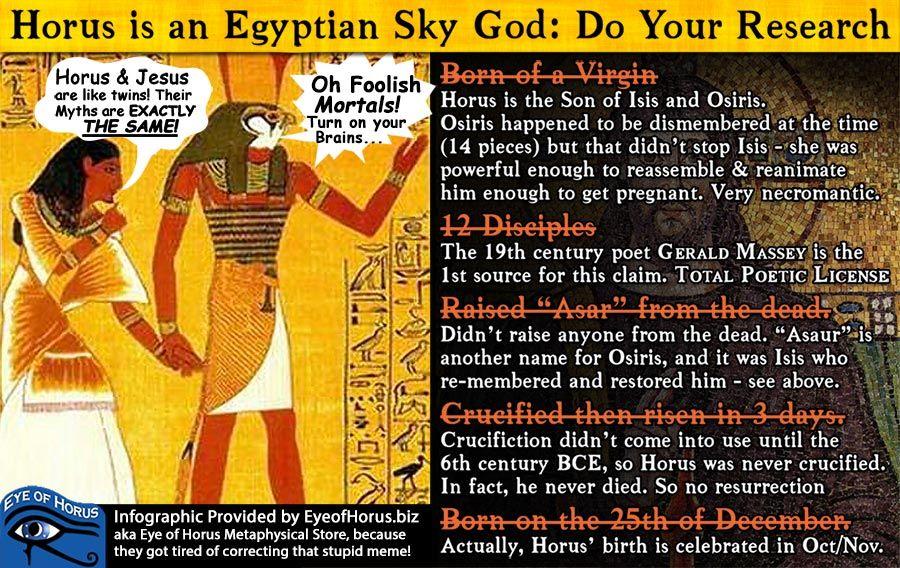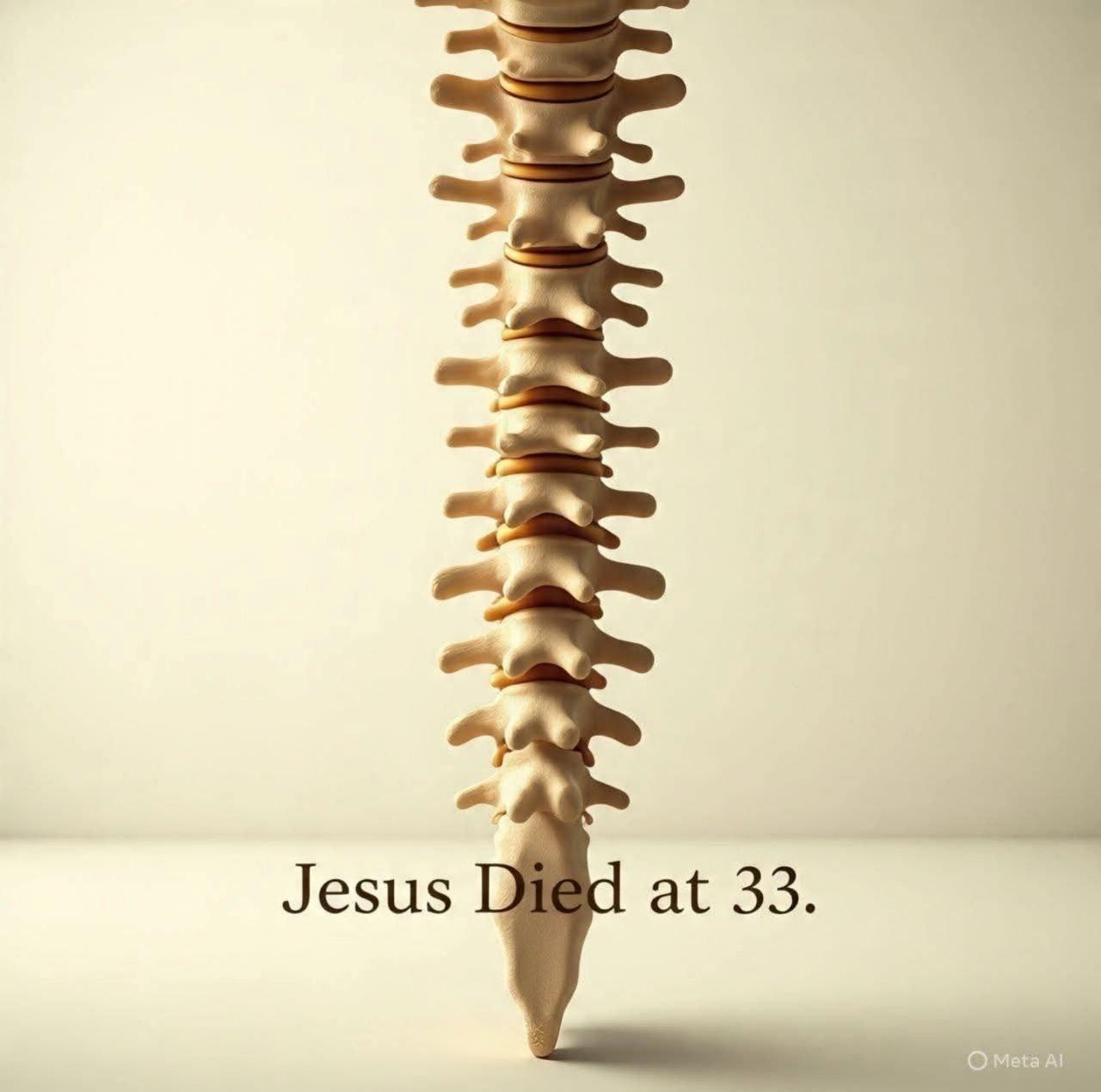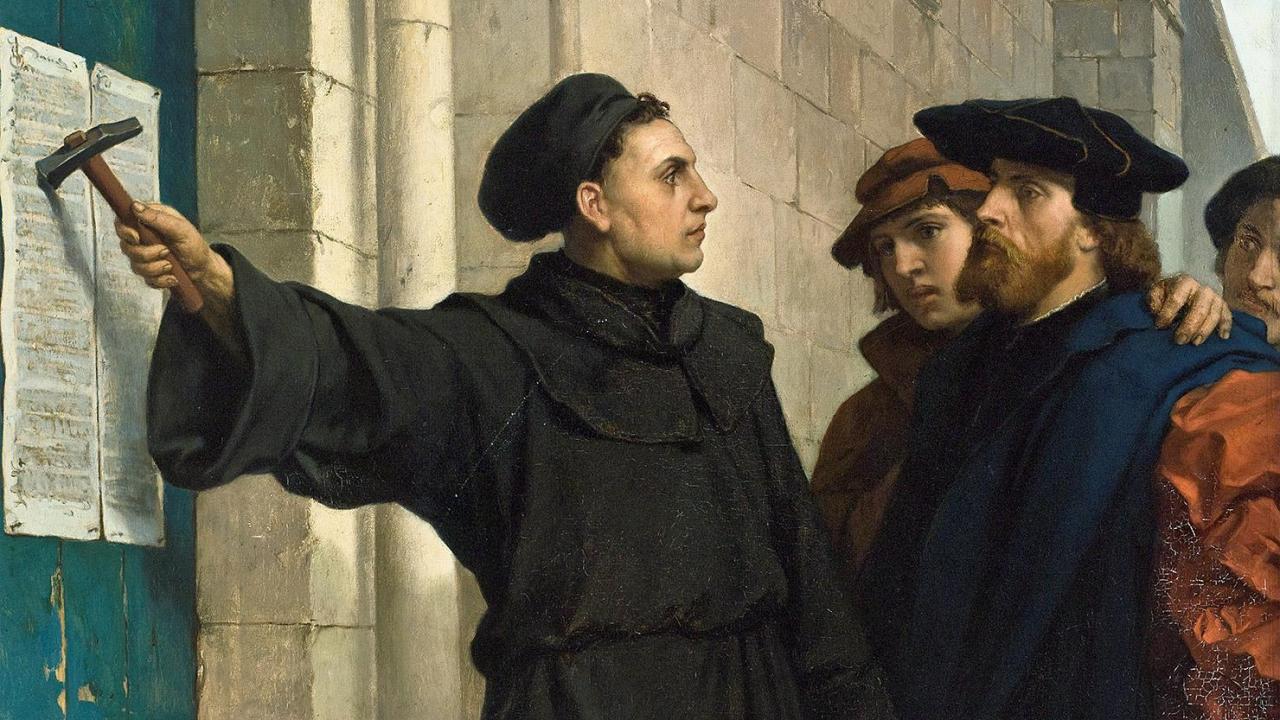Jesus, Mithras and Ancient Roman Cults: Separating Fact from Fiction

Welcome to the next instalment of my series looking at the ancient mythological gods and how they compare to the life, death and resurrection of Jesus. Mithras is yet another popular ancient god that people like to compare with Jesus and make wild claims about, proposing that they are the same deities with different names. But is this even remotely true?
This article has ended up being a bit longer than anticipated as it’s one of the few ancient religions that was contemporary to the birth of Christianity which was seen as somewhat of a rival belief system, so there’s a lot of interesting things to cover!
The Origins
Mithras has his roots in ancient Persia, where he was known as Mithra, a god associated with the sun and light. The Romans adopted and adapted Mithras into their own religious pantheon, creating the secretive cult of Mithras, which was particularly popular among Roman soldiers, who admired his association with bravery, strength, and the sun. The idea of the blood sacrifice of the bull feeding the earth also played a role in the minds of the soldiers shedding their own blood on the battlefields.
The earliest literary references we have to Mithraism are between AD 80–100 from Latin poet Statius, and also from Plutarch, a Greek philosopher and priest. Ulansey’s hypothesis (The Origins of the Mithraic Mysteries: Cosmology and Salvation in the Ancient World.) suggests that Mithraism was introduced around 60 BC by captured pirates from Asia Minor, where it was associated with the Perseus myth. This idea highlights the idea that Mithraism was a fusion of numerous diverse beliefs and symbols.
Birth Stories
The birth of Mithras is quite intriguing; he was born from a rock or stone, fully formed and wearing a Phrygian cap, often holding a torch or a dagger. This miraculous birth is known as the “petra genetrix” or the “rock-born.” Jesus’ birth is celebrated by Christians as a divine miracle, with the virgin Mary giving birth to him in a humble stable in Bethlehem after being overshadowed by the Spirit of God (Luke 1:34-35), but still being born in the flesh like everyone else from a woman. Nothing like how Mithras supposedly came about.
Central Acts and Teachings
Mithras is best known for the tauroctony, where he slays a bull to release life-giving forces that ensure the Earth’s fertility. The name comes from the Greek word tauroktonos (ταυροκτόνος) meaning “bull killing”. This act represents Mithras’ divine intervention in the natural world as the blood from the bull was believed to release life-giving forces, ensuring the Earth’s fertility and the continuation of life. Jesus, in contrast, is known for his teachings of love, compassion, and forgiveness. His miracles, such as healing the sick, command over nature and turning water into wine, demonstrate his divine power and connection to God as Lord and creator of the world.
Another key difference is the fact that women were excluded from the Mithraic cult, which lies in stark contrast to Christianity which, in many ways, elevated the status of women. Jesus openly had women disciples and included them in his ministry and witness, as well as financial and other support (Luke 8:1–3) which went against the grain of society at the time (and later, even hosting churches in their homes!).
For example, the scholarly view of Mary sitting at Jesus’ feet acknowledges that it was unusual for a woman to take on the role of a disciple in this way, as religious education and discipleship were often reserved only for men. However, this scene in Luke 10:38–42 is significant because it highlights Jesus’ inclusive attitude towards women in his ministry. Similarly, in John 4:4–42 where Jesus speaks with the woman at the well, Jesus demonstrates his willingness to cross social and cultural boundaries. Jesus, as Jewish man, engaging in a conversation with an unrelated Samaritan woman in public broke several cultural and religious barriers. And lastly, the women who were first to witness the resurrection report the account is important because the testimony of women wasn’t considered as reliable as that of a man. This actually lends to the authenticity of the Gospel accounts because if the Gospel writers were fabricating the story, they would have been more likely to choose male witnesses (possibly the more prominent disciples like Peter, James or John) to make the account more credible. The fact that women are the primary witnesses indicates more that the writers were faithfully reporting the events as they occurred.
The fact that women (and other outcasts of society) were so included can be seen in critical ancient witnesses to Christianity, one well-known example coming from Celsus, a 2nd-century Greek philosopher and critic of the faith. He wrote that Christianity “attracted ignorant and foolish people, including women and children” (Contra Celsus, 3.44).

The Mithraic Mysteries
Now, this is where things start to get a bit intriguing. The cult of Mithras was what you might call a secret society, complete with its own set of initiation rituals and beliefs that were only shared with members. The kind of thing to give the Da Vinci Code a run for its money! Unfortunately, due to the secretive nature of the cult, many aspects of the Mithraic mysteries remain unknown to this day, though we do have some insights we can glean from the early church fathers who interacted with these cultists.
Justin Martyr was an early Christian apologist who wrote about the similarities between Christianity and pagan religions, including the cult of Mithras, around AD 155. In his First Apology, Justin Martyr addresses the parallels he sees between Mithras and Christianity, particularly in terms of the rituals practised by Mithraists. Although he does not provide an extensive account of Mithraism, he does make a few references that highlight similarities to Christianity. Here is the relevant quote from Justin Martyr’s “First Apology” (Chapter 66) so you can see it for yourself:
For the apostles, in the memoirs composed by them, which are called Gospels, have thus delivered unto us what was enjoined upon them; that Jesus took bread, and when He had given thanks, said, “This do ye in remembrance of Me, this is My body;” and that, after the same manner, having taken the cup and given thanks, He said, “This is My blood;” and gave it to them alone. Which the wicked devils have imitated in the mysteries of Mithras, commanding the same thing to be done. For, that bread and a cup of water are placed with certain incantations in the mystic rites of one who is being initiated, you either know or can learn.
In this passage, Justin Martyr claims that the Mithras cult imitated the Christian Eucharist (the ritual involving bread and wine representing the body and blood of Jesus Christ) by using bread and a cup of water in their initiation rites. It’s debated whether the cult did get inspiration from Christian practice, or if Justin is vilifying the similar practices as a way to defend and promote Christianity. Though there is some evidence to suggest much of the Mithraic practices we do know about come from post-New Testament times. Nonetheless, these quotes provide insight into how early Christians viewed the Mithras cult and its perceived similarities with Christianity.
It is entirely possible the Mithras cult did incorporate similar Christian practices, as they were seen as a rival religion, especially as the earliest literary references we have to Mithraism are between AD 80–100 from Latin poet Statius, and Plutarch, a Greek philosopher, decades after Christianity’s practices were established.
The cult of Mithras was a secret society, with initiation rituals and beliefs only shared among its members. This exclusivity and mystery made it appealing to some, but it also limited its reach. Christianity, on the other hand, was more accessible, with Jesus preaching to the masses and welcoming people from all walks of life. Even though rituals like the Eucharist were closed to the non-baptised, this general openness played a significant role in the rapid spread of Christianity throughout the Roman Empire and beyond.
Hierarchy and Spiritual Growth
The Mithraic cult had seven grades of initiation, each associated with a planetary deity. Devotees would ascend these grades in pursuit of passing through the minor planetary deities and reaching the point of the fixed stars. The rising of the initiate through these stages prefigured the ascent of the soul after death. In contrast, spiritual growth in Christianity is achieved through developing a personal relationship with Jesus, following his teachings, being filled with the Holy Spirit, and participating in sacraments like baptism and communion (Eucharist).
While both belief systems value spiritual growth, their approaches differ, especially in that with Christianity all the work for salvation is achieved by and through Jesus, we don’t work or do things to attain that salvation.
We also know what the seven grades of initiation into Mithraism were called, thanks to Jerome listing them out in chapter two of his letter To Laeta:
Those I mean by which the worshippers [of Mithras] were initiated as Raven, Bridegroom, Soldier, Lion, Perseus, Sun, Crab, and Father?
It’s not unusual for religions to have special rites and rituals, but since we know very little about Mithraism, it’s really impossible to make any proper claims that it is similar to Christianity in any meaningful way.
Death and Resurrection
While there are no explicit accounts of Mithras’ death and/or resurrection, the theme of cyclical renewal or regeneration may have been associated with him, especially considering his connection to the sun (many Mithraic depictions show a banquet with the god Sol, the Sun).
Jesus’ crucifixion, death, and resurrection are central to the Christian faith, as Paul says in 1 Corinthians 15:14, “if Christ has not been raised, then our proclamation is in vain and your faith is in vain”. Jesus was crucified by the Romans, and after his death, he was buried in a tomb. Three days later, he was resurrected, conquering death and sin, and ultimately providing salvation to humanity and reconciliation to God. This is something the Mithraic cult doesn’t touch on or really have any comparable beliefs or doctrines that we know of, so any claims to the contrary are factually incorrect.
The Decline and Disappearance
The cult of Mithras spread throughout the Roman Empire, especially in the western provinces, and left behind numerous temples and artefacts. However, as Christianity gained prominence in the late Roman Empire, the cult of Mithras faced some stiff competition and began to decline and Christianity eventually overtook the cult.
The two religions have a few things in common on the surface — both involve initiation rituals, a focus on salvation, and a central deity figure. But that could be said of many religions, and none of the core beliefs of Christianity or Jesus are the same as Mithras.
Christianity was more accessible to the masses and eventually overtook the secretive Mithraic cult. Mithras gradually faded from memory, leaving behind a mysterious legacy that continues to captivate scholars and history enthusiasts alike to this day, whereas Churches can be found in nearly every town and city across this country (the UK), and in many other parts of the world, because the truth of Jesus has only grown stronger and spread globally over the last 2000 years.
Further Reading
- Näsström.indd.pag.indd (isvroma.org)
- Handbuch Der Orientalistik — Google Books
- Philip Schaff: NPNF2–06. Jerome: The Principal Works of St. Jerome — Christian Classics Ethereal Library (ccel.org)
- Tauroctony — Wikipedia
- The Tauroctony (tertullian.org)
- 9 The Mithraic Mysteries as Symbol System: III. The Tauroctony | The Religion of the Mithras Cult in the Roman Empire: Mysteries of the Unconquered Sun | Oxford Academic (oup.com)
- Main Tauroctony relief from Dura Europos — The New Mithraeum
- Corpus Inscriptionum et Monumentorum Religionis Mithriacae (CIMRM) (tertullian.org)
- Is Jesus Simply a Retelling of the Mithras Mythology? | Cold Case Christianity
- Phrygian cap | Definition, History, & Facts | Britannica
- Justin Martyr: First Apology | Patristics.info
- Mithraism — Mythology and theology | Britannica
- The Origins of the Mithraic Mysteries: Cosmology and Salvation in the Ancient World | Oxford Academic (oup.com)
- Celsus’ view of Christians and Christianity (bluffton.edu)
- How Early Christianity was Mocked for Welcoming Women — Canon Fodder (michaeljkruger.com)
- Mithraism — Wikipedia
Leave a comment Like Back to Top Seen 7.7K times Liked 0 times
Enjoying this content?
Support my work by becoming a patron on Patreon!
By joining, you help fund the time, research, and effort that goes into creating this content — and you’ll also get access to exclusive perks and updates.
Even a small amount per month makes a real difference. Thank you for your support!
Subscribe to Updates
If you enjoyed this, why not subscribe to free email updates and join over 864 subscribers today!
My new book is out now! Order today wherever you get books
Recent Posts
Luke J. Wilson | 19th August 2025 | Fact-Checking
A poetic post has been circulating widely on Facebook, suggesting that our anatomy mirrors various aspects of Scripture. On the surface it sounds inspiring, but when we take time to weigh its claims, two main problems emerge. The viral post circulating on Facebook [Source] First, some of its imagery unintentionally undermines the pre-existence of Christ, as if Jesus only “held the earth together” for the 33 years of His earthly life. Second, it risks reducing the resurrection to something like biological regeneration, as if Jesus simply restarted after three days, instead of being raised in the miraculous power of God. Alongside these theological dangers, many of the scientific claims are overstated or symbolic rather than factual. Let’s go through them one by one. 1. “Jesus died at 33. The human spine has 33 vertebrae. The same structure that holds us up is the same number of years He held this Earth.” The human spine does generally have 33 vertebrae, but that number includes fused bones (the sacrum and coccyx), and not everyone has the same count. Some people have 32 or 34. More importantly, the Bible never says Jesus was exactly 33 when He died — Luke tells us He began His ministry at “about thirty” (Luke 3:23), and we know His public ministry lasted a few years, but His precise age at death is a tradition, not a biblical statement. See my other recent article examining the age of Jesus here. Theologically, the phrase “the same number of years He held this Earth” is problematic. Jesus did not hold the world together only for 33 years. The eternal Word was with God in the beginning (John 1:1–3), and “in Him all things hold together” (Colossians 1:17). Hebrews says He “sustains all things by His powerful word” (Hebrews 1:3). He has always upheld creation, before His incarnation, during His earthly ministry, and after His resurrection. To imply otherwise is to risk undermining the pre-existence of Christ. 2. “We have 12 ribs on each side. 12 disciples. 12 tribes of Israel. God built His design into our bones.” Most people do have 12 pairs of ribs, though some are born with an extra rib, or fewer. The number 12 is certainly biblical: the 12 tribes of Israel (Genesis 49), the 12 apostles (Matthew 10:1–4), and the 12 gates and foundations of the New Jerusalem (Revelation 21). But there’s no biblical connection between rib count and these symbolic twelves. This is a case of poetic association, not design woven into our bones. The only real mention of ribs in Scripture is when Eve is created from one of Adam’s ribs in Genesis 2:21–22, which has often led to the teaching in some churches that men have one less rib than women (contradicting this new claim)! 3. “The vagus nerve runs from your brain to your heart and gut. It calms storms inside the body. It looks just like a cross.” The vagus nerve is real and remarkable. It regulates heart rate, digestion, and helps calm stress, and doctors are even using vagus nerve stimulation as therapy for epilepsy, depression, and inflammation showing it really does “calm storms” in the body. But it does not look like a cross anatomically. The language about “calming storms” may echo the way Jesus calmed the storm on the Sea of Galilee (Mark 4:39), but here again the poetic flourish stretches science (and Scripture) beyond what’s accurate. 4. “Jesus rose on the third day. Science tells us that when you fast for 3 days, your body starts regenerating. Old cells die. New ones are born. Healing begins. Your body literally resurrects itself.” There’s a serious theological problem here. To equate Jesus’ resurrection with a biological “regeneration” after fasting is to misrepresent what actually happened. Fasting can indeed trigger cell renewal and immune repair, but it cannot bring the dead back to life. It’s still a natural process that happens...
Luke J. Wilson | 08th July 2025 | Islam
“We all worship the same God”. Table of Contents 1) Where YHWH and Allah Appear Similar 2) Where Allah’s Character Contradicts YHWH’s Goodness 3) Where Their Revelations Directly Contradict Each Other 4) YHWH’s Love for the Nations vs. Allah’s Commands to Subjugate 5) Can God Be Seen? What the Bible and Qur’an Say 6) Salvation by Grace vs. Salvation by Works Conclusion: Same God? Or Different Revelations? You’ve heard it from politicians, celebrities, and even some pastors. It’s become something of a modern mantra, trying to shoehorn acceptance of other beliefs and blend all religions into one, especially the Abrahamic ones. But what if the Bible and Qur’an tell different stories? Let’s see what their own words reveal so you can judge for yourself. This Tweet recently caused a stir on social media 1) Where YHWH and Allah Appear Similar Many point out that Jews, Christians, and Muslims share a belief in one eternal Creator God. That’s true — up to a point. Both the Bible and Qur’an describe God as powerful, all-knowing, merciful, and more. Here’s a list comparing some of the common shared attributes between YHWH and Allah, with direct citations from both Scriptures: 26 Shared Attributes of YHWH and Allah According to the Bible (NRSV) and the Qur’an Eternal YHWH: “From everlasting to everlasting you are God.” — Psalm 90:2 Allah: “He is the First and the Last…” — Surah 57:3 Creator YHWH: “In the beginning God created the heavens and the earth.” — Genesis 1:1 Allah: “The Originator of the heavens and the earth…” — Surah 2:117 Omnipotent (All-Powerful) YHWH: “Nothing is too hard for you.” — Jeremiah 32:17 Allah: “Allah is over all things competent.” — Surah 2:20 Omniscient (All-Knowing) YHWH: “Even before a word is on my tongue, O LORD, you know it.” — Psalm 139:4 Allah: “He knows what is on the land and in the sea…” — Surah 6:59 Omnipresent (Present Everywhere) YHWH: “Where can I go from your Spirit?” — Psalm 139:7–10 Allah: “He is with you wherever you are.” — Surah 57:4 Holy YHWH: “Holy, holy, holy is the LORD of hosts.” — Isaiah 6:3 Allah: “The Holy One (Al-Quddus).” — Surah 59:23 Just YHWH: “A God of faithfulness and without injustice.” — Deuteronomy 32:4 Allah: “Is not Allah the most just of judges?” — Surah 95:8 Merciful YHWH: “The LORD, merciful and gracious…” — Exodus 34:6 Allah: “The Most Gracious, the Most Merciful.” — Surah 1:1 Compassionate YHWH: “As a father has compassion on his children…” — Psalm 103:13 Allah: “He is the Forgiving, the Affectionate.” — Surah 85:14 Faithful YHWH: “Great is your faithfulness.” — Lamentations 3:22–23 Allah: “Indeed, the promise of Allah is truth.” — Surah 30:60 Unchanging YHWH: “For I the LORD do not change.” — Malachi 3:6 Allah: “None can change His words.” — Surah 6:115 Sovereign YHWH: “The LORD has established his throne in the heavens…” — Psalm 103:19 Allah: “Blessed is He in whose hand is dominion…” — Surah 67:1 Loving YHWH: “God is love.” — 1 John 4:8 Allah: “Indeed, my Lord is Merciful and Affectionate (Al-Wadud).” — Surah 11:90 Forgiving YHWH: “I will not remember your sins.” — Isaiah 43:25 Allah: “Allah forgives all sins…” — Surah 39:53 Wrathful toward evil YHWH: “The LORD is a jealous and avenging God…” — Nahum 1:2 Allah: “For them is a severe punishment.” — Surah 3:4 One/Unique YHWH: “The LORD is one.” — Deuteronomy 6:4 Allah: “Say: He is Allah, One.” — Surah 112:1 Jealous of worship YHWH: “I the LORD your God am a jealous God.” �...
Luke J. Wilson | 05th June 2025 | Blogging
As we commemorated the 500th anniversary of the Protestant Reformation this year, the familiar image of Martin Luther striding up to the church door in Wittenberg — hammer in hand and fire in his eyes — has once again taken centre stage. It’s a compelling picture, etched into the imagination of many. But as is often the case with historical legends, closer scrutiny tells a far more nuanced and thought-provoking story. The Myth of the Door: Was the Hammer Ever Raised? Cambridge Reformation scholar Richard Rex is one among several historians who have challenged the romanticised narrative. “Strangely,” he observes, “there’s almost no solid evidence that Luther actually went and nailed them to the church door that day, and ample reasons to doubt that he did.” Indeed, the first image of Luther hammering up his 95 Theses doesn’t appear until 1697 — over 180 years after the fact. Eric Metaxas, in his recent biography of Luther, echoes Rex’s scepticism. The earliest confirmed action we can confidently attribute to Luther on 31 October 1517 is not an act of public defiance, but the posting of two private letters to bishops. The famous hammer-blow may never have sounded at all. Conflicting Accounts Philip Melanchthon, Luther’s successor and first biographer, adds another layer of complexity. He claimed Luther “publicly affixed” the Theses to the door of All Saints’ Church, but Melanchthon wasn’t even in Wittenberg at the time. Moreover, Luther himself never mentioned posting the Theses publicly, even when recalling the events years later. Instead, he consistently spoke of writing to the bishops, hoping the matter could be addressed internally. At the time, it was common practice for a university disputation to be announced by posting theses on church doors using printed placards. But no Wittenberg-printed copies of the 95 Theses survive. And while university statutes did require notices to be posted on all church doors in the city, Melanchthon refers only to the Castle Church. It’s plausible Luther may have posted the Theses later, perhaps in mid-November — but even that remains uncertain. What we do know is that the Theses were quickly circulated among Wittenberg’s academic elite and, from there, spread throughout the Holy Roman Empire at a remarkable pace. The Real Spark: Ink, Not Iron If there was a true catalyst for the Reformation, it wasn’t a hammer but a printing press. Luther’s Latin theses were swiftly reproduced as pamphlets in Basel, Leipzig, and Nuremberg. Hundreds of copies were printed before the year’s end, and a German translation soon followed, though it may never have been formally published. Within two weeks, Luther’s arguments were being discussed across Germany. The machinery of mass communication — still in its relative infancy — played a pivotal role in what became a theological, political, and social upheaval. The Letters of a Conscientious Pastor Far from the bold revolutionary of popular imagination, Luther appears in 1517 as a pastor deeply troubled by the abuse of indulgences, writing with respectful concern to those in authority. In his letter to Archbishop Albrecht of Mainz, he humbly addresses the archbishop as “Most Illustrious Prince,” and refers to himself as “the dregs of humanity.” “I, the dregs of humanity, have so much boldness that I have dared to think of a letter to the height of your Sublimity,” he writes — hardly the voice of a man trying to pick a fight. From Whisper to Roar Luther’s initial appeal through formal channels was, predictably, ignored. He was advised not to make trouble. But as opposition mounted and corruption remained unchecked, the once quiet reformer grew louder. His theological convictions deepened, and his public persona evolved. The lion did eventually roar — but not on October 31. A Catholic Reformer, Not a Protestant Founder It’s vital to remem...
Luke J. Wilson | 20th May 2025 | Islam
You are not alone. Around the world, many Muslims — people who already believe in one God, pray, and seek to live righteously — are drawn to know more about Jesus (ʿĪsā in Arabic). Some have heard He is more than a prophet. Some have sensed His presence in a dream or vision. And some simply long to know God more deeply, personally, and truly. So what does it mean to become a Christian? And how can you take that step? This guide is for you. 1. What Christians Believe About God and Jesus ➤ One God, Eternal and Good Christians believe in one God — the same Creator known to Abraham, Moses, and the prophets. But we also believe God is more personal and relational than many realise. In His love, He has revealed Himself as Father, Son (Jesus), and Holy Spirit — not three gods, but one God in three persons. ➤ Jesus Is More Than a Prophet Muslims honour Jesus as a great prophet, born of the virgin Mary. Christians also affirm this — but go further. The Bible teaches that Jesus is the Word of God (Kalimat Allāh), who became flesh to live among us. He performed miracles, healed the sick, raised the dead — and lived without sin.Jesus came not just to teach but to save — to bring us back to God by bearing our sins and rising again in victory over death. 2. Why Do We Need Saving? ➤ The Problem: Sin All people — no matter their religion — struggle with sin. We lie, get angry, feel jealous, act selfishly, or fail to love God fully. The Bible says: “All have sinned and fall short of the glory of God.” (Romans 3:23) Sin separates us from God. And no matter how many good deeds we do, we can never make ourselves perfect or holy before Him. ➤ The Solution: Jesus Because God loves us, He did not leave us in our sin. He sent Jesus, His eternal Word, to live as one of us. Jesus died willingly, offering His life as a sacrifice for our sins, then rose again on the third day. “But God proves his love for us in that while we still were sinners Christ died for us.” (Romans 5:8) 3. How Do I Become a Christian? Becoming a Christian is not about joining a Western religion. It’s about entering a relationship with God through faith in Jesus Christ. Here is what the Bible says: ✝️ 1. Believe in Jesus Believe that Jesus is the Son of God, that He died for your sins, and that He rose again. “If you confess with your lips that Jesus is Lord and believe in your heart that God raised him from the dead, you will be saved.” (Romans 10:9) 💔 2. Repent of Your Sins Turn away from sin and ask God to forgive you. This is called repentance. It means being truly sorry and choosing a new way. “Repent therefore, and turn to God so that your sins may be wiped out.” (Acts 3:19) 💧 3. Be Baptised Jesus commands His followers to be baptised in water as a sign of their new life. Baptism represents washing away your old life and rising into a new one with Jesus. “Repent and be baptised every one of you in the name of Jesus Christ so that your sins may be forgiven.” (Acts 2:38) 🕊️ 4. Receive the Holy Spirit When you believe in Jesus, God gives you the Holy Spirit to live within you, guiding you, comforting you, and helping you follow His will. “You received the Spirit of adoption, by whom we cry, ‘Abba! Father!’” (Romans 8:15) 🧎 5. Begin a New Life As a Christian, you are born again — spiritually renewed. You begin to grow in faith, love, and holiness. You read the Bible, pray, fast, and gather with other believers. Your life is no longer your own; you now live for God. 4. What Does a Christian Life Look Like? Jesus said: “If anyone wants to become my followers, let them deny themselves and take up their cross and follow me.” (Matthew 16:24) This means: Loving God with all your heart Loving your neighbour — even your enemies Forgiving others ...







